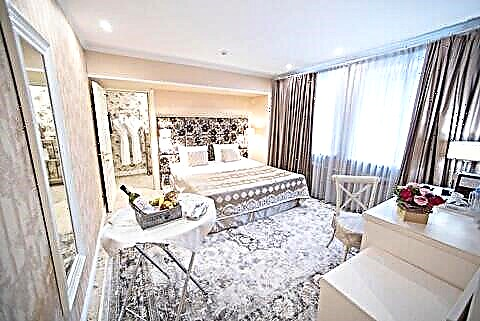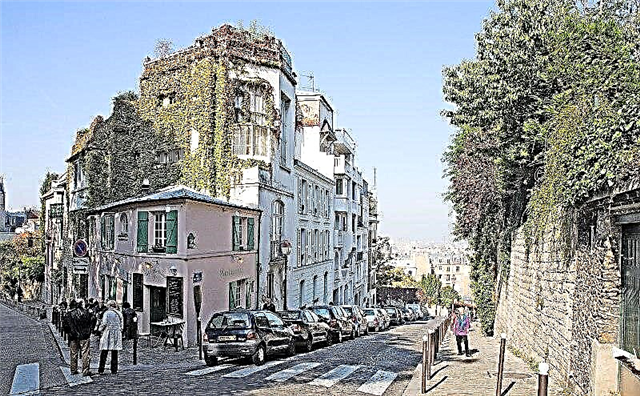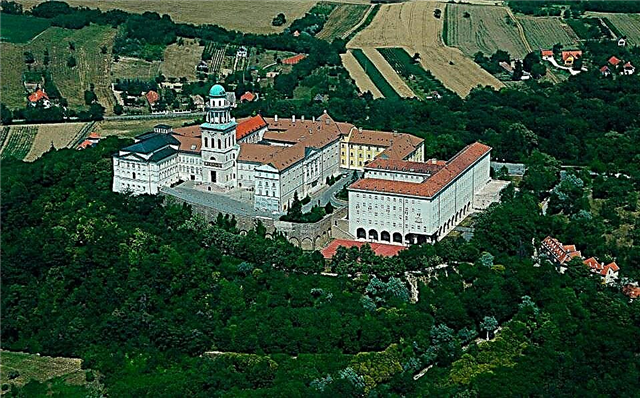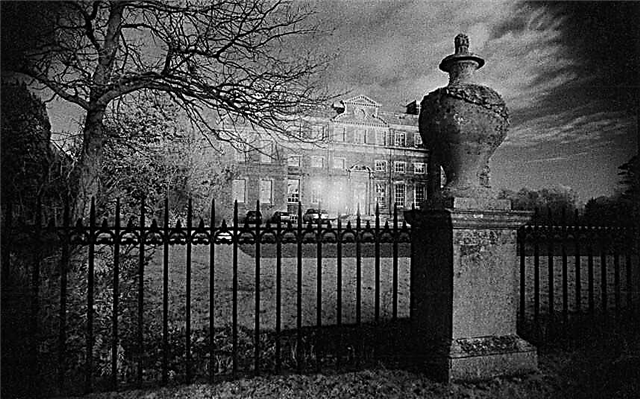One of the most impressive images of ghosts was taken in 1936 by the photographer Indra Shaira and his assistant Provand at the Rainhem Hall estate. The silhouette of the so-called Brown Lady is clearly visible against the background of the stairs. The photo, printed in the magazine, then made a real sensation among readers, and to this day arouses keen interest of specialists in anomalous phenomena. Experts who investigated it never found signs of a fake.
The fact is that this is not the only evidence of the presence of an otherworldly phenomenon in the house. A lot of people have met the ghost over the past quarter century. The most famous was at the beginning of the 19th century the then regent George IV. He spent the night in a bedroom intended for state guests, in the middle of the night he saw a woman at his feet, strangely smiling, with black eye sockets. I was very scared and left without waiting for the morning.

Captain Frederick Marriet, a famous novelist, met the Brown Lady in one of the rooms. He didn't really believe in ghosts, thinking that they were poachers, or just bandits, so he had a pistol with him just in case. At the meeting, the captain was not taken aback and fired directly at point-blank range, to which the stranger simply grinned and disappeared behind the door. In the morning, a bullet was found in the wall, it went through the shadow and stuck in a wooden panel.
Colonel Loftus also met a mysterious lady on the night before Christmas, but wrote off his adventure for the amount of alcohol he had drunk, after all, it was a holiday. However, the next evening he saw her again, very clearly, so that he could describe her to his comrades, and even made a drawing. According to him, it was a stately woman, with a proud bearing, dressed in a luxurious brown brocade dress, a cap on her head, frightened only by empty eye sockets. She walked down the stairs, holding a lighted lamp.
The description was very much like the portrait of Dorothy, wife of the second Marquis of Townshend, Charles, which adorned one of the walls. The portrait itself also frightened the household. In the afternoon, in the sunlight, the picture depicted the most beautiful woman with kind eyes and a sweet smile on her face. At night, she turned into a pale grimace, frightening with black, empty eyes.

The history of the estate itself begins with a small landowner in Norfolk, Roger Townshend. He traveled around Europe for some time, gained fame and an excellent education. In 1627 he was promoted to baronet. Construction began in 1619 according to the designs of Inigo Jones, the famous architect who was the founder of the British architectural tradition. Some scholars doubt the authorship of the project due to the decoration of the building in the Italian style. But Jones made a special trip to Italy in 1613 to study the work of Palladio. So there is nothing surprising in the few inclusions characteristic of this country. The magnificent building with high windows and exquisite cladding has turned out to be a wonderful example of Italian style in England.
Third Baronet Townshend, Horatio was awarded the title of Viscount in 1682 for his active position in the restoration of the monarchy in 1660. And already his son Charles invited the famous architect William Kent to complete the northern part of the building and design the interior decoration. The estate has turned into a real work of art. The garden around the house was distinguished by sophistication of forms and lines. No wonder the royals liked to visit the hosts, holding various meetings and ceremonies here. He is still well-groomed and neat.

Charles had a rich history at court. Due to various political intrigues, he was dismissed, then he again fell into mercy and became Lord President of the Privy Council in 1720. His second wife was Dorothy Walpole, sister of Robert Walpole, head of the government of England. He is now called the first prime minister, just then such terms did not exist yet.
Married at the age of 26, Dorothy was one of the passions of Duke Philip Wharton. There is no definite opinion about who she really loved, her husband, or the duke. The latter became famous at that time for the creation of the "Hellfire Club". There is little reliable information about his activities. It is known that members of the club were also accepted by women, which was not typical for those times. They did not do anything criminal, but they didn’t do anything useful either. They drank, drank, blasphemed ... The scandal provoked by the meetings of Dorothy and Philip ended with the abolition of the Walpole club.

The Marquis Toutschend never forgave his wife, he imprisoned her in one of the rooms of his house. And a year later she died. The exact cause of her death is not known. But after the magnificent funeral, rumors spread that they were not real, the marquise was alive and in captivity. Walpole, of course, did not like all this, he finally quarreled with his son-in-law.
In 1730, Charles resigned and took up farming on his estate. His second wife, perhaps, really died in 1726, and perhaps much later from exhaustion in the north tower or in the basements of Rainham Hall. The true history has not survived to this day. But sometimes the silhouette of the Brown Lady appears on the steps in the front door, frightening households and guests.
Over the four centuries of its existence, these walls have witnessed many events taking place with its owners. The fourth Viscount George became a hero of the Seven Years' War. The title of Earl of Leicester was specially established for his son.

A high-profile story happened with the Second Earl of Leicester and the Third Marquess of Townshend. He married Sarah Gardner in 1807, who escaped two years later with the brewer John Margets. The child, born a little later, Sarah wanted to assign the title of count, but the court denied her this.
The estate is now owned by the Seventh Marquis of Townshend, Charles. His heir is the son of Thomas, Viscount Reinem. Who knows what else will happen in the estate, famous for its mysterious and well-known chronicles. One thing is clear for sure - Rainham Hall is one of the historical and architectural monuments of old England, worthy of awe and careful study.
Recommended for viewing Whitby Abbey, England.











